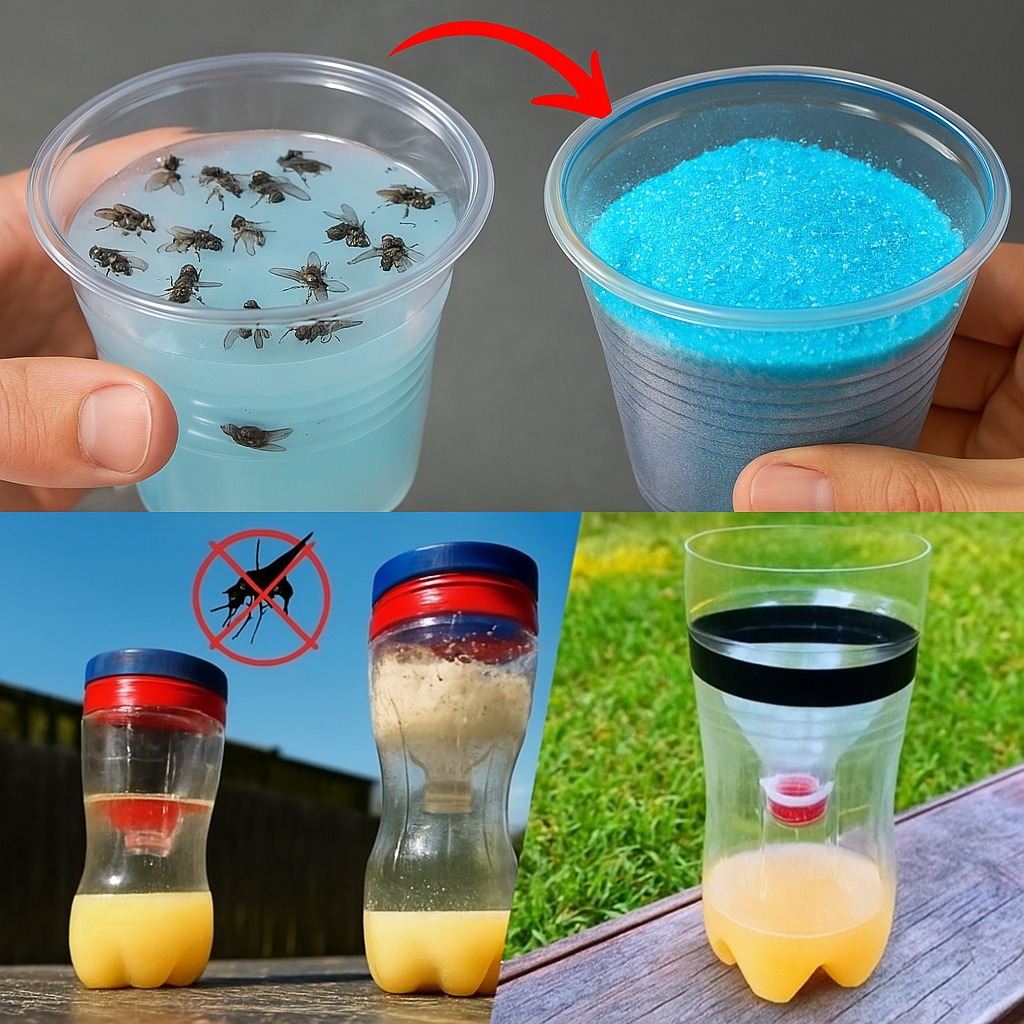ADVERTISEMENT
**Homemade Mosquito Trap: The Only Natural Remedy That Eliminates Them All**
Mosquitoes are one of the most pervasive pests, notorious not only for their itchy bites but also for their ability to spread dangerous diseases like malaria, dengue, Zika virus, and West Nile virus. While there are many commercial products on the market to keep mosquitoes at bay, many people are looking for safer, more natural ways to deal with these pesky insects. If you’re looking for an effective, low-cost solution, creating a homemade mosquito trap is an excellent option. These traps are not only environmentally friendly but can also eliminate mosquitoes naturally, without relying on harmful chemicals.
In this article, we will delve into the science behind mosquito behavior, why certain ingredients attract them, and how to create an efficient homemade mosquito trap. Whether you’re battling mosquitoes in your home, backyard, or garden, you’ll find that making your own mosquito traps is a simple, cost-effective solution that eliminates them all.
### **Understanding Mosquito Behavior**
Before we dive into making homemade mosquito traps, it’s important to understand why mosquitoes are attracted to certain areas and substances. This will allow us to design traps that are most effective in attracting and capturing them.
#### **1. What Attracts Mosquitoes?**
Mosquitoes are particularly attracted to carbon dioxide (CO2), which humans and animals exhale when they breathe. This is why mosquitoes tend to flock to people. They can also sense heat, so warm bodies are more likely to attract them. Other factors include:
– **Body odor and sweat**: Mosquitoes are drawn to the lactic acid, uric acid, and ammonia found in sweat. These compounds are released through our skin as we perspire.
– **Skin chemicals**: Certain skin chemicals, such as those found in natural body odors or perfumes, may make us more attractive to mosquitoes. For example, people with a higher body temperature or those who consume more alcohol are often more prone to mosquito bites.
– **Light**: Mosquitoes are often attracted to light at night, especially ultraviolet (UV) light. This is why you’ll sometimes find them buzzing around your porch light in the evening.
By understanding these attractions, we can create mosquito traps that mimic the conditions mosquitoes are naturally drawn to.
### **Why Choose a Homemade Mosquito Trap?**
There are several reasons why a homemade mosquito trap might be your best choice over commercial products:
1. **Cost-effective**: Many commercial mosquito traps and insecticides can be expensive. Homemade traps, on the other hand, require only a few inexpensive household materials.
2. **Non-toxic**: Unlike chemical mosquito repellents and sprays, homemade traps do not rely on harmful toxins, making them a safe option for families with children and pets.
3. **Environmentally friendly**: Homemade mosquito traps use simple, sustainable ingredients, making them an eco-friendly alternative to chemical solutions. They reduce the need for harmful pesticides that can negatively impact your garden and local wildlife.
4. **Customizable**: Depending on the materials you have on hand, homemade mosquito traps can be adjusted to suit your specific environment or preferences. Whether you’re looking to control mosquitoes in your backyard, your house, or even your camping tent, there are a variety of traps you can easily make at home.
### **How Does a Mosquito Trap Work?**
The basic principle behind most mosquito traps is to mimic the stimuli that attract mosquitoes. By creating an environment that smells and feels like a human or animal, mosquitoes are lured into the trap. Once they enter, they are trapped and either suffocated, caught, or repelled.
Common mosquito traps use substances like:
– **Carbon dioxide (CO2)**: As mentioned, mosquitoes are attracted to the CO2 we exhale. Some homemade traps use yeast or sugar to produce CO2, mimicking human breath.
– **Fermentation**: Many homemade mosquito traps use fermentation to attract mosquitoes. The fermentation process releases CO2, which mosquitoes can detect, along with scents they associate with food sources like sugary substances.
– **Heat**: Mosquitoes are drawn to warmth, so using materials that mimic body heat can increase the effectiveness of your trap.
### **The Most Effective Homemade Mosquito Traps**
There are various ways you can create a homemade mosquito trap, each with different ingredients and techniques. Below are some of the most effective and easy-to-make mosquito traps you can try at home. The materials for these traps are inexpensive, and you’ll likely already have many of them in your kitchen or garage.
#### **1. The Classic Sugar and Yeast Mosquito Trap**
One of the most popular and effective homemade mosquito traps involves using sugar and yeast. This trap mimics the CO2 that humans exhale, attracting mosquitoes to the trap.
**Materials Needed:**
– A plastic bottle (2-liter size works well)
– 1 cup of warm water
– 1/4 cup of brown sugar
– 1/4 teaspoon of active dry yeast
– Scissors
– Tape
**Steps:**
1. **Cut the Bottle**: Using scissors, carefully cut the plastic bottle in half. You’ll use both the top and bottom parts of the bottle.
2. **Prepare the Mixture**: In a bowl, combine the warm water and brown sugar. Stir until the sugar dissolves completely. Once the sugar is dissolved, add the yeast. This mixture will begin to ferment and release CO2, which is the key attractant for mosquitoes.
3. **Assemble the Trap**: Place the top half of the bottle upside down inside the bottom half, creating a funnel shape. Tape the edges to secure them in place.
For Complete Cooking STEPS Please Head On Over To Next Page Or Open button (>) and don’t forget to SHARE with your Facebook friends
